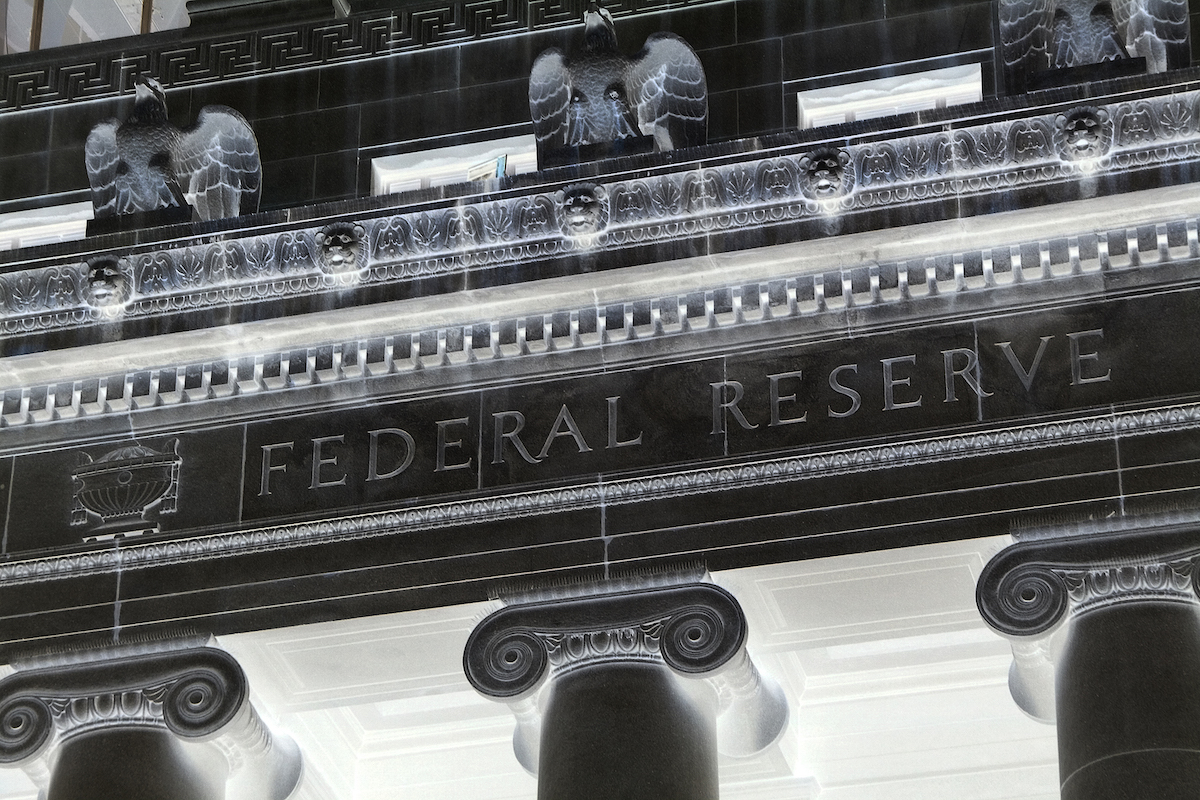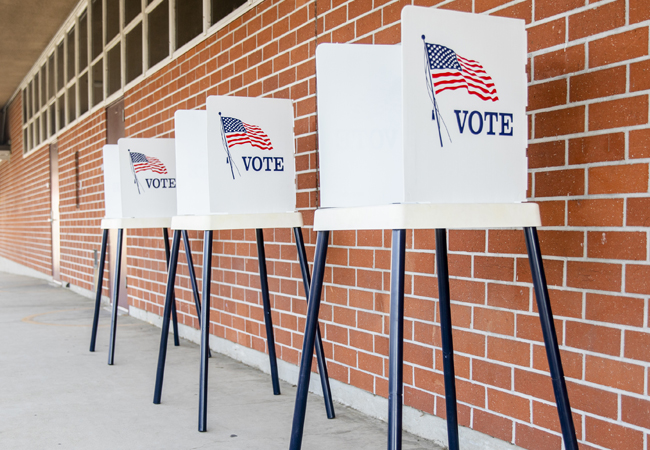by Hubert Marleau, Market Economist, Palos Management
Heading into the U.S. elections, the stock market neglected favourable earnings reports which were generally above analysts’ estimates and economic and monetary prints which beat expectations by a large margin. The U.S. surprise index is presently 126. Unless the spike in the coronavirus caseload suddenly brings unwanted lockdowns, the upward direction of the economy will be maintained.
Yet, the S&P 500 lost 5.8% this week, closing at 3270—that is 8.7% off the September 2 all-time high of 3580. Traders decided to close overextended positions. Why? There are stark policy contrasts advocated by the Republicans and the Democrats. The key issues are Taxation, Foreign Relations, Regulations, Infrastructure and Energy. The direct consequences of their strategic plans in these areas could violently whiplash the market.
While it may be appropriate for traders to act in the aforementioned way because the bulk of their short term positions is financed with day-to-day loans, it's not a good strategy for investors. Long term investors should shy away from daily trading one’s portfolio based on election-related volatility. It’s ridiculous. Making daily predictions of small things like relative stock performance, interest rate spreads and currency swap rates that are impossible to access with any degree of accuracy is a pure waste of time. They are written in sawdust, evaporating the next day.
On Friday, UBS which is pretty good at forecasting big pictures, predicted that there is no doomsday scenario ahead of us. The Barrons put together the UBS forecast in a succinct manner. It wrote:“UBS has the S&P 500 rising 17.2% through 2022 under the status quo, 23.3% under a democratic sweep and 26.2% if Biden wins but the Senate does not flip.” The bank is optimistic that Pfizer, Moderna, AstraZeneca plus others in the Covid-19 vaccine race, will come through with a victory. By its math, vaccine hope is already 80% priced into the stock market, but only 46% priced into value stocks. Interestingly, BlackRock also hopped on the inflation bandwagon.
Indeed, it may be wiser to add exposure when emotions are causing stocks in the aggregate to trade near their 200-day support price level which is 3200. It's fascinating that last January before the market got wind that a pandemic was on its way, the S&P 500 was trading between 3250 and 3325.
As I mentioned in previous comments, stock market performance is rarely negative following presidential elections regardless of who wins the election. On November 4, it will be business as usual. The FOMC will meet for a two day session. One can safely assure that the Fed will act swiftly to prevent a major financial catastrophe from unfolding, emphasizing the all-important shift in the Fed’s new orientation to spruce inflation rather than quash it and will advocate more fiscal stimulus. Given that default is unacceptable and high growth is impossible, the eventual unwinding of debt can only be politically bearable with higher inflation. Greater monetary expansion combined with inflation is the way to keep the system going and avoid a disastrous clearing.
On Friday the FT published an interesting article showing that a blue painted Oval Office is better than a red One. The Ft wrote: “The simple fact is that since 1900 through October 27, $10,000 invested in the Dow Jones Industrial Average only when Republicans were president would have grown to $100,000 (a 4.0 percent annualized return).
The same $10,000 would have grown to nearly $430,000 if it had been invested when Democrats were president (a 6.1% annualized return). But it would be foolish to stop there. If $10,000 was invested in 1900, and remained invested regardless of presidential political party, it would have been worth more than $4.3m today, an annualized return of 5.2%.”
Interestingly, the stock market has rarely been good when there has been a Republican president with a split Congress—but always good in any other combinations. The best period for US stocks has occurred when there has been a Democrat in the White House with a split Congress.
History is clear that recessions are terrible for incumbents. The FT added: “Since 1952, six presidential elections have been accompanied by either a recession or a bear market or both. In every case, the incumbent president lost the election.” While the above observation is a rear-view mirror and perhaps an educated way to look at what may happen, it remains that past performance is no predictor of the future. But it helps to put things in proper perspective.
What Happened to the N-GDP From Q/4 2019 to Q/3 2020. Massive Changes.
Nominal GDP totalled $21,157.6bn (saar) in Q/3, registering an 8.4% increase over the previous quarter, rising at the annualized rate of 33.6%. In spite of this massive increase, the economy is still 2.7% lower than the level of economic activity that was registered in the last quarter of 2019. The big question is whether the economy has the potential to climb a $590 billion hill without further fiscal stimulus.
The N-GDP would need to rise 2.8% or at an annualized rate of 11.2% in the December quarter. That is a tall order particularly given that we don't have the Covid-19 pandemic under control with either a vaccine, universal drug treatment or herd immunity. In this regard, it is far more likely that it will take a few more quarters to reach the Q/4 N-GDP target of $21,747.4 billion.
That said, my interpretation of what is going on the demand, monetary and supply sides of the economy suggests that the potential to put business back together and push its activity back to the level registered in Q/4 2019 exists in short order.
On The Monetary Side: During the September quarter of 2020, the money supply (M2) totalled $18,457.0bn compared to $15236.0bn in the last quarter of 2019, representing an increase of 21.1%. Given that the overall economy including inflation decreased 2.7%, the turnover of money fell 23.8%. In my judgment there is a good chance that the velocity of money could stabilize in the coming quarters because highly transactional money (M1) accounts for a much larger proportion of M2. It’s currently 30% versus 26% last February. Interestingly, a return to normal proportions could potentially release about $750bn of economic activity. In the seven months that ended September 2020, M1 rose a whopping 37.5% compared to only 14.8% for M2-M1.
Moreover, the treasury General Account which is not part of the money supply, is extremely elevated at 1.653tn-- near a historical high. Over time, these very large government cash balances will eventually find their way into the private income and spending streams. These balances, once disposed with, will boost the money supply (M2) by as much as 9.0%. The bottom line is that a stabilization of money velocity combined with a fast increase in the money supply would mechanically increase the level of business activity.
On The Supply Side: N-GDP is the product of inflation, employment and productivity. From the last quarter of 2019 to the September 2020 quarter, employment decreased 7.9%, productivity rose 5.2% and inflation increased 1.2%, to produce an overall decrease of 2.7% in N-GDP. If it had not been for the Tech Titans, which many want to minimize their financial and business power, there would have been little in the way of productivity increases. The digital economy saved our butts. The digitization of the economy will likely continue.
Even if their numbers are only half as good for the Tech Giants when the pandemic curse cools down, we are still bound to get some output efficiency over the next six months. Presently, there is plenty of unused labour and industrial capacity to feed just about any given increase in demand. For example, there were11.2 million less workers employed in September than last February. The utilization rate of the working population is 71.6%--it should be around 77%. Meanwhile, the capacity utilization rate in the manufacturing sector is presently at 70%--it’s usually around 77%.
On The demand Side: The U.S. economy is based on personal consumption which in turn is dependent on the propensity of consumers to spend their income and deplete their savings. In the quarter ended September 2020, personal disposable income totalled $17,664.2bn versus $16,539.6bn in the December quarter of 2019. The entire $1,124.6bn increase is attributable to a $1,248.1bn increase in government transfer payments. What is interesting is that all that extra money flowed into personal savings and some. Personal savings in Q/3 totalled $2782.7bn--that is 1,534.6 bn more than in Q/4 2019.
In other words, there are enough extra personal savings to compensate for a $1,2848.1bn reduction in government transfers. In order to get back to where we were at the end of last year, consumer expenditures in those areas that were negatively affected by the pandemic, need to be revived.. In Q/3, Americans spent $843.8bn less on clothing & footwear ($32.3bn), gasoline & energy ($90.2bn), health care ($121.1), transportation services ($127.8), recreation ($131.6), hospitality & restaurants ($184.4 and general services ($156.4). The above shows that the entire $589.8bn reduction in the N-GDP was related to social distancing and reduced mobility. Thus, a cure to the infectious nature of the pandemic on business activity would lead to a fast amelioration.
What Does All That Mean
The bottom line is that the economy has sufficient monetary power, physical capacity and spending potential to bring back the goldilock character that defined the pre-pandemic economy. However, it needs government help to essentially bridge the output gap while the pandemic is still on. It means more transferring of private debt to the government. This is bound to happen regardless who wins; but the composition and magnitude of the forthcoming stage-5 fiscal relief will depend on how the post-election government power will be shared between the Republicans and the Democrats.
Copyright © Palos Management














